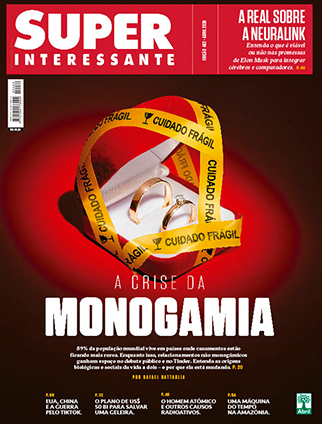Inglês: Interpretação – The Dictionary of American Regional English
This ambitious lexicographical project was enhanced by the unexpected richness of the American vocabulary

THE MAIN STREAM AND THE BRANCHES The language English is one. But it may sound very different depending on the region of the United States
Joan Houston Hall, a lexicographer, is concerned about the use of regionalisms throughout the country. She works in one of America’s most ambitious lexicographical projects, which culminates with the publication of a dictionary by Harvard University Press, 50 years after the project was inaugurated by Frederic G. Cassidy.
Mr. Cassidy, who died in 2000, did not make it to the end of the alphabet. But to scholars and language lovers the work he set in motion is an invaluable guide to the way Americans not only speak but also live. The dictionary includes nearly 60,000 terms, many of them reflecting the country’s rural and agricultural past. But among the pages and pages of names for wildflowers and farm implements, Dare, as the dictionary is commonly known, includes enough newer terms to suggest that the state of regional English isn’t quite as bad as may suggest
the laments about the homogenizing forces of urbanization, mass media and the Internet.
Ms. Hall recognizes that the extremes of regional speech are disappearing; however, she is pleased to find out that there are still lots of regional words. If it has become harder to find many different terms for outdated expressions, that’s partly because people today are more likely to be talking about fast food or traffic. In fact, in the age of Twitter and Facebook, linguists say, the interactions that most powerfully shape our speech are still local and face to face. In sum, American English actually has more words for the same things than ever before.
Adapted from: <https://www.nytimes.com/2012/02/25/books/dictionary-of-american- regional-english-reaches-last-volume.html?pagewanted=all>. Accessed on August 14th, 2012. (Vestibular UFSC 2013, adaptado)
EXERCÍCIOS – UFSC 2013 (ADAPTADO)
Nas questões a seguir, pode haver mais de uma alternativa correta.
1. Regarding the dictionary mentioned in the text, it is correct to state that:
a) the Dictionary of American Regional English is a result of one of America’s most ambitious lexicographical projects.
b) Joan Houston Hall is the only lexicographer responsible for the dictionary published by Harvard University.
c) the dictionary which is a product of a group of students from Harvard consists of almost 60,000 terms.
d) the Dictionary of American Regional English is also known as Dare.
e) the inclusion of newer terms in the Dictionary of American Regional English suggests that the state of regional English isn’t so bad.
2. Select the correct proposition(s).
a) The Dictionary of American Regional English is a scientific article about a scientific experiment.
b) The text adapted from The New York Times was released originally in February 25th, 2012.
c) The text is about a dictionary whose project was started by Frederic G. Cassidy.
d) The text was written by Joan Houston Hall, a lexicographer who works with dictionaries.
e) The Dictionary of American Regional English is a text printed in the mass media about people who like dictionaries.
3. Select the proposition(s) which presents (present) correct explanations for the expressions highlighted in the text.
a) not only… but also: adding information
b) nearly: indicating distance
c) more likely to: expressing probability
d) in fact: emphasizing information
e) in sum: providing additional ideas
f) actually: reinforcing ideas
RESPOSTAS
1. Analisando as alternativas:
a) O primeiro parágrafo informa que, Joan Houston Hall trabalha em um dos mais ambiciosos projetos de lexicografa da América, que culmina na publicação de um dicionário publicado pela Harvard University Press (nome da editora). Correta.
b) O trecho “… 50 years after the project was inaugurated by Frederic G. Cassidy” (…50 anos depois que o projeto foi lançado por Frederic G. Cassidy) demonstra que Joan Houston Hall não é a única responsável pelo projeto. Incorreta.
c) O texto afirma, realmente, que o dicionário inclui aproximadamente 60 mil termos, mas não há nenhuma menção ao fato de estudantes terem participado de sua produção. (Não se confunda: neste contexto, “scholars” signifca especialistas, e não estudantes.) Incorreta.
d) Sim, o dicionário é conhecido por Dare. No trecho: “… Dare, as the dictionary is commonly known”. Correta.
e) A ideia proposta na alternativa é explícita no trecho “Dare … includes enough newer terms to suggest that the state of regional English isn’t quite as bad…”. Correta.
Resposta: A, D, E
2. Simples compreensão de texto. Analisando as alternativas:
a) A expressão “The Dictionary of American Regional English”, apresentada aqui, pode se referir tanto ao dicionário em si (o Dare) quanto ao título do texto. Seja como for, nenhum deles é um artigo científico. Incorreta.
b) Ambas as informações você encontra na indicação da fonte de onde o texto foi extraído, mais precisamente, do site de onde ele foi retirado: “nytimes.com” indica o jornal New York Times e a data de publicação é 2012/2/25 (ano 2012, mês fevereiro, dia 25). Correta.
c) A ideia está explícita no trecho: “…50 years after the project was inaugurated by Frederic G. Cassidy” (50 anos depois que o projeto foi inaugurado por Frederic G. Cassidy). Correta.
d) O texto é do jornal New York Times, e não está assinado. Segundo o texto, Joan Houston Hall participa do projeto do dicionário. Incorreta.
e) Novamente, a expressão “The Dictionary of American Regional English” pode se referir ao nome do dicionário ou ao título do texto. Seja como for, nem um nem outro trata de pessoas que apreciam dicionários. Incorreta.
Resposta: B, C
3. Analisando cada alternativa:
a) “not only… but also” (não apenas… mas também) é uma expressão empregada para adicionar informações. Correta.
b) “Near” (perto), sim, refere-se a distância. Mas o advérbio salientado no texto, “nearly” (cerca de) passa a ideia de arredondamento de um valor. Veja: “nearly 60,000 terms” (cerca de 60 mil termos). Incorreta. c) “ More likely to” (mais propenso a) expressa probabilidade. Correta.
d) “In fact” (de fato) é uma expressão de ênfase. Correta.
e) “In sum” (em resumo, enfim) não indica a apresentação de novas ideias, mas anuncia uma conclusão que leva em conta todos os fatores apresentados anteriormente. Incorreta.
f) Não se confunda: “actually” é um falso cognato que significa “na verdade’, e não “atualmente”. E essas expressões são empregadas para reforçar uma ideia. Correta.
Resposta: A, C, D, F
Salvar








